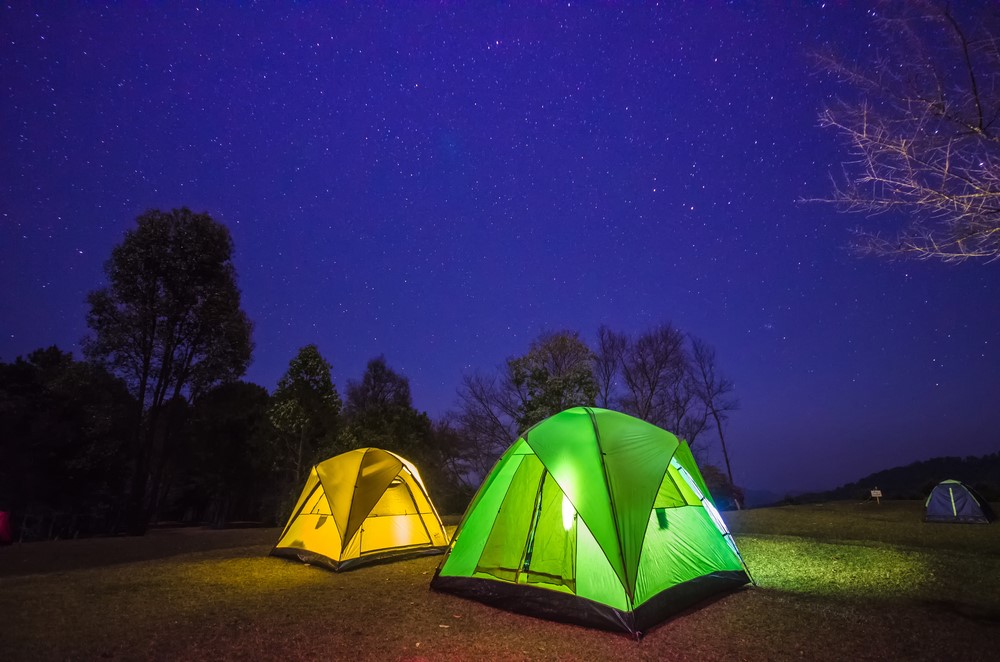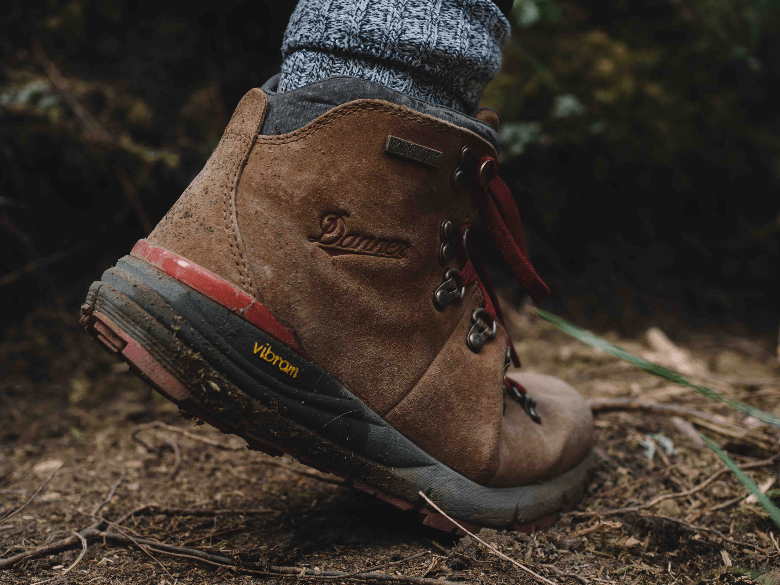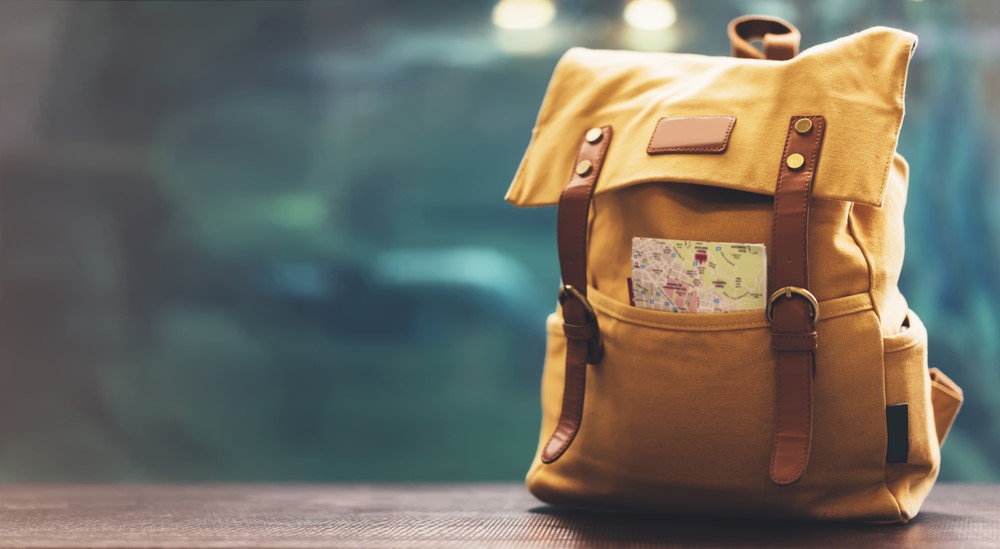There’s a lot to think about when first learning to go backpacking. It’s a great hobby and one that could add a whole lot to your life. Becoming immersed in nature elicits a certain set of primitive instincts. This is deeply satisfying. In this article, we’re providing you with our best backpacking tips for beginners that will help you conquer the challenges and a relaxing time in the wild.
You need to prepare as nature could be harsh and also unforgiving. When you’re trekking for more than one day, you encounter a new set of challenges to a normal day hike. Today, we’re providing you with our very best backpacking tips for beginners that will help you conquer those challenges and enjoy a relaxing time in the wild.
Preparing Your Hike
Where To Go
The most crucial decision you’ll need to make when planning your hiking trip is the place where to go. There are several factors to consider here which this backpacking guide will help you navigate. As a beginner, you need to select something that isn’t going to be too demanding.
Route
The very first aspect to consider is the route. Try to find flat trails which are short and doesn’t have too much elevation. It may need a few trips before beginning to understand your physical limitations. Far better to underestimate those to start with!
If any difficulties do arise, it is usually advisable to be near civilization. That doesn’t necessarily mean you can’t experience the wilderness but try and pick a route that isn’t very far away from some roads or small neighborhoods. The most famous beginner backpacking trails generally have plenty of people on them. Which means you are never far off from someone else, should problems arise.
Lastly, if you are camping outdoors overnight get started with just a single night. Even the best-prepared beginners will certainly encounter some unexpected situations on their initial few trips. Many minor problems aren’t normally that serious when you’re only staying for one night. In case you suddenly realize you didn’t pack adequate food, you’ll be able to usually tough it out for a single night.
Choosing A Campsite
 Wherever possible, choose a recognized campsite for your first expeditions. Apart from being less difficult to find, it will likely have some amenities which will simplify the experience. A great example of this could be bear-proof foods storage containers or bear poles. If you’re a novice to this, the idea saves you the need to figure out the hanging food back technique.
Wherever possible, choose a recognized campsite for your first expeditions. Apart from being less difficult to find, it will likely have some amenities which will simplify the experience. A great example of this could be bear-proof foods storage containers or bear poles. If you’re a novice to this, the idea saves you the need to figure out the hanging food back technique.
Again, well-known campsites will have other people there. This provides an extra layer of safety because assistance is never far away.
Try to research the camping site online or perhaps in a local guidebook in advance. Campsites having a dirt flooring are much simpler to pitch your tent than on any wood platform. This will save you-you the need to hammer in the tent pegs.
Accessibility to freshwater is very crucial at any camping site. Apart from the whole vital to your survival thing, water can also be beneficial to clean and cooking equipment.
Some more well-known campsites may have pre-built fire pits that are safe places to get heat or warm up toasted marshmallows. Among my favorite elements of backpacking is relaxing around a fire after a long day’s hike. There’s something enchanting about enjoying a fire. The last thing you need is for the fire to get out of the control, so fire pits are your friends here.
Research the Environment
Conditions can differ significantly even over short distances. Always research the regional conditions when you plan a trip. This can include checking out local laws about litter, fire, and wildlife. Certain areas might have specific dangers like bears. You have to take special safety measures for the same.
It’s worth looking at the expected climatic conditions. This will help to plan what to pack and avoiding starting any forest fires accidentally!
Who To Go With
Planning the first trip is exciting. It’s very easy to get overly enthusiastic and invite your whole extended family. You need to be cautious with the less able-bodied individual. This can include the elderly and children. Till you have some experience, it’s best not to bring kids. You might find yourself in certain difficult situations that aren’t going to make better in the existence of your children. Learn how to take care of yourself first, then, by all means, take the kids on a later trip.
The same applies to pets. Don’t take the dog along if it’s your very first hike. You will find extra facts to consider here, particularly for small dogs. They might tire out and require to be carried, or they might cause additional troubles with local wildlife. In either case, you don’t want to encounter problems like this as a novice.
Equipment
A part of being well prepared is ensuring you have the ideal equipment. As I found on a recent holiday to Australia, backpacking is no fun if you don’t possess the right equipment. I had rented a useless tent and stove, including a few missing pieces. Be sure you purchase a few high quality, trustworthy gear before you go.
Backpack
Ensure that whatever overnight backpack you bring feels safe. It may sound obvious; however, the majority of people don’t check this. Stock up the pack with some weight and then try walking around with them. Is it comfortable? Does it sit on your body? Check it out before you buy or borrow.
You might be tempted by having an ultralight backpack. Much less to carry. The truth is, ultralight backpacks have much less cushioning and is quite uncomfortable when fully loaded. If you wish to save weight, do this on the stuff that goes into the backpack.
When it comes to size, that will depend upon how long your trip is. If you had followed my advice in the planning section and just chose a one night trip, a 30-liter pack should be enough. However, for 2-3 night trips, you’ll probably need a 50-liter pack. If you’re buying one, I’d suggest this size as you’ll likely start going on lengthier trips as you build up more experience.
Lengthy trips of 5 or more days typically require 70 liters, but that probably overkills for starters and even intermediates. The only exception here will be if you plan on taking the kids along in future. No, you won’t fit them in the pack, before you ask, but you’ll need to carry extra food and clothes for them.
Sleeping Equipment
Sharing is always caring. It’s also a lot more productive to share a two-person tent that for two people to carry two one-person tents. When selecting a tent, save some weight and get a three-season tent. You don’t require a heavier one graded for harsh winter weather yet – Mt Everest can certainly wait until next year!
Something you probably won’t like to share is a sleeping bag. Generally, you will find two types of material: Synthetic and Down. Synthetic sleeping bags are quick-drying and superior in wet environments. Since they are cheaper, it’s normally a safe place to start. Down, on the other hand, is lightweight and excellent in the cold, but tend to be much more expensive. With regards to tents, you possibly can skip the wintertime rated sleeping bag.
Sleeping pads possess two functions: insulation and comfort. If you’re able to sleep on a very hard surface, a closed-cell sleeping pad can help to save a lot of weight and your money. However, self-inflating pads provide a better nights sleep for not a lot more. It was the first upgrade I got myself after my first backpack camping getaway.
Cooking Equipment
You’ll need to start with a trusted stove. Nothing restores the body and the mind in the wilderness as a hot meal. Gas canister stove will be the easiest choice to start with. As stoves are generally metal, ensure that you pick a light-weight one. Some stoves nowadays include USB ports and all sorts of manner of fancy gadgets. For a starter, keep it simplistic. Be sure that your gas canister is full before setting out on your amazing camping trip.
A lot of people bring pans and pots from home. However, you can usually pick up some light-weight variety from the local camping store. Carry just enough so that you can cook and eat your meals. One set of cutlery is sufficient; you’ll be able to wash it each time. Just be sure to bring some bio-degradable soap to do this. If you bring a small hand towel, you can hang it outside your camping tent so that it can dry during the day.
If you’re camping near a good water resource, then simply carrying a couple of plastic bottles might be sufficient. Water bags having long tubes can be convenient for a drink while you’re on the go. Just remember that if it’s readily available, you’ll probably drink a lot more easily. You’ll want to consume more water than usual on any backpacking trip. If you don’t wish to spend on a water filter, some easy purification tablets could make almost any sort of water drinkable. Unless you know it’s harmless, make sure you filter or purify the drinking water. You will never know what bacteria could be in the water otherwise.
Clothes
Generally, there are four fundamental clothing groups:
- Base layers – Normally underwear that is comfy and helps to keep you warm on a chilly night
- Hiking layers – Clothing in normal dry conditions. Often a t-shirt and pants (synthetic materials be more effective)
- Insulation – If the weather is colder, insulating material helps to keep you warm. Consider all those hiking fleeces which soccer moms wear.
- Rainwear – A water-proof outer layer is important. You will never know when the weather conditions could turn.
For the first trip, you will have much of this clothing already in your house. By layering your clothes, you could certainly adapt quickly to weather conditions as well as remaining dry. Make sure to avoid Denim and cotton that takes a very long time to dry, in case you get wet.

Probably the most crucial item of clothing is your shoes. There’s a never-ending debate about wearing suitable hiking boots or more light-weight trail runners. Hiking boots are strong, sturdy although require some time to ‘break-in.’ I’ve experienced many blisters by wearing these having to break them in properly.
Trail runners tend to be more lightweight, similar to sports trainers. They’re breathable and maintain your feet cool in warm weather. On top of that, they require no ‘break-in’ period. One particular downside is the absence of ankle protection. In case you are carrying a large pack, this may be a little riskier.
Take a look at out our backpacking checklist. Make sure you run through it before you embark your adventure.
Food & Drink
Walking long distances holding a heavy backpack is challenging. You’ll need to make sure you’ve got plenty of energy to keep going. Ensure that you eat a lot of calories while you’re on your trip. Complex carbohydrates are the perfect source of energy here. While it’s fantastic to enjoy a hot meal at night, and also at times in the morning, keep in mind that cooking food and washing is a lot of additional work. Remember that Fresh food won’t last very long without refrigeration too
Breakfast
Easy breakfast bars or granola are a good way to begin the day. Hot instant tea or coffee can get some warmness into you and help you get ready for a day’s hike. If you wish to take the time to cook, bacon and eggs are a fantastic choice (bring a cooler bag) or perhaps pancakes if you are feeling ambitious.
Lunch/Snacks
Some people like a full meal at lunchtime, whereas others would rather have large snacks during the day. The latter option happens to be better for keeping a stable level of energy. It’s better to take food that doesn’t need cooking for lunch. Energy bars, nuts, dried foods are perfect choices. Peanut butter & jelly sandwiches are perfect for shorter 2-3 day trips. I prefer to take some chocolate as well since it always lifts my mood.
Dinner
Dinner must be a sizable hot meal. Having something to look forward to will let you find the energy to keep going strong. The go-to meal of preference would be some boil-in-the-bag meal. You can find nearly every dish done like that nowadays, however with different quality. Rice, pasta, or noodle dishes normally have a lot of great complex carbs. Processed tuna keeps well on lengthier hikes may add some nice protein to your mix.
Drinks
Stay hydrated on your trip. You must stay hydrated as you’ll be sweating significantly throughout the day, specifically if the weather is hot. Coffee & Tea provides a nice warm drink if it’s colder. I’d normally avoid consuming any alcohol for apparent reasons. Soda can be heavy to take, and it is hard to keep cool, so consider not having for a few days.
Mental & Physical Preparation
A part of preparing for any backpacking trip is understanding the skills you will need to survive along with training yourself for the physical challenges.
Basic Navigation Skills
GPS is wonderful. However, it can and does fail. Battery packs can lose charge; devices could get damaged. Don’t leave the house without having a good traditional map and compass. It’s very crucial to understand where you are and which way you’re going. Check out this video to learn how just to do that.
Get Ready Physically
Walking for hours every day, a few days in a row, having a heavy backpack is tough. You don’t hold the comforts of being at home to recharge yourself by the end of the day either. You must have at least a minimal level of fitness.
The easiest method to train is by going on small day hikes, carrying a pack. This will get you accustomed to walking long distances along with carrying a backpack.
Test Your Equipment
The worst thing you want at the end of a lengthy day’s hiking is to find out that you’re missing an item of your tent or that the stove doesn’t function. Take your equipment out at home and test out every piece to ensure it works. It goes for clothing too.
While you do this, ensure that everything is fully dried up. No person prefers a wet sleeping bag.
Check The Weather
Weather conditions can and does change dramatically. Check the prediction before you go. If it’s likely to be heavy rain, think of postponing your camping trip. Things are harder in the rain, particularly for beginners. Even when there is no rain forecast, carry waterproofs. Climatic conditions can change quickly.
Emergency Plans
Create a route plan before going and give it to family members or friends. Set a check-in point towards the end so they can contact help in case you go missing. Carry a first aid kit to help you with any minor medical problems. Remember that cellphone signal might not reach every part of your journey, don’t count on this in the event of emergencies, though calling 911 (112 internationally) might work even though you have no cellphone signal since these calls can use different networks too.
Summary
Planning and preparation is the core of a good backpacking trip. Select a manageable route for your level of experience. Research and select the required equipment for all climatic conditions. Ensure that you test it thoroughly before going. Bring good healthy food & drink to maintain your energy levels high. Ensure that you get ready mentally and physically.
As they say, ‘Fail to plan, and you plan to fail!’
Happy backpacking trip to you guys!

